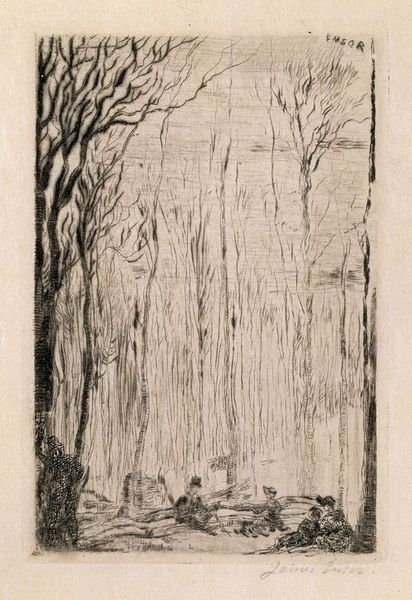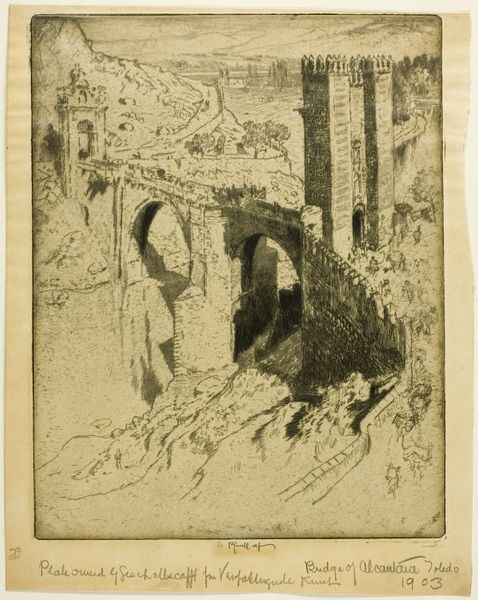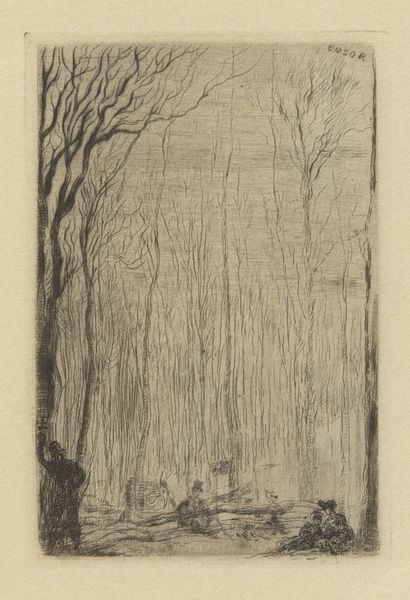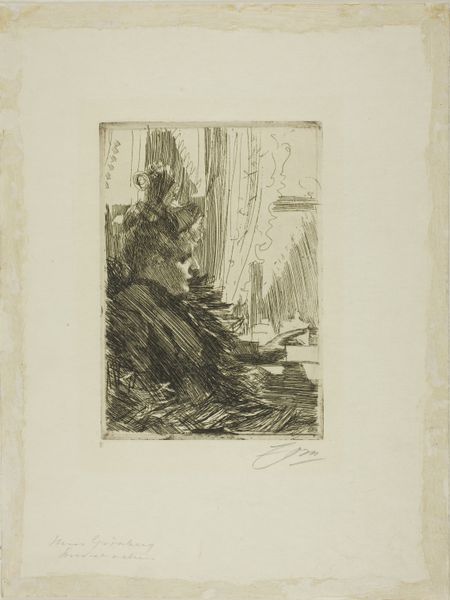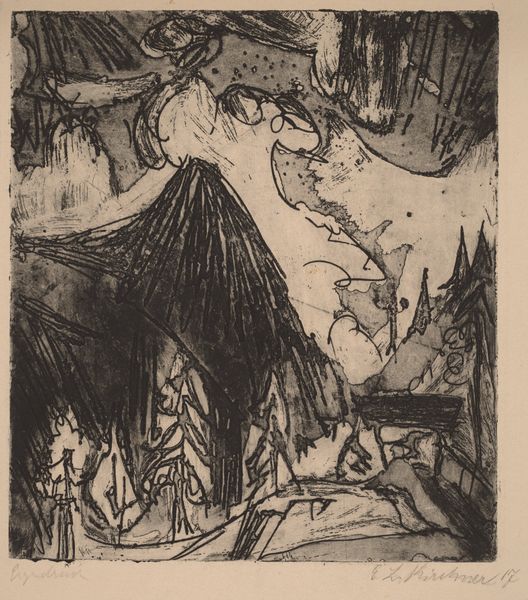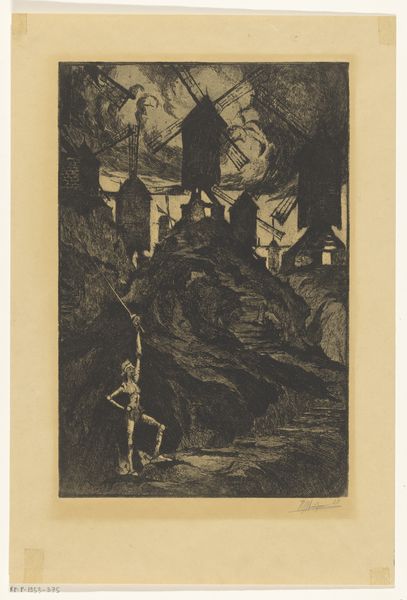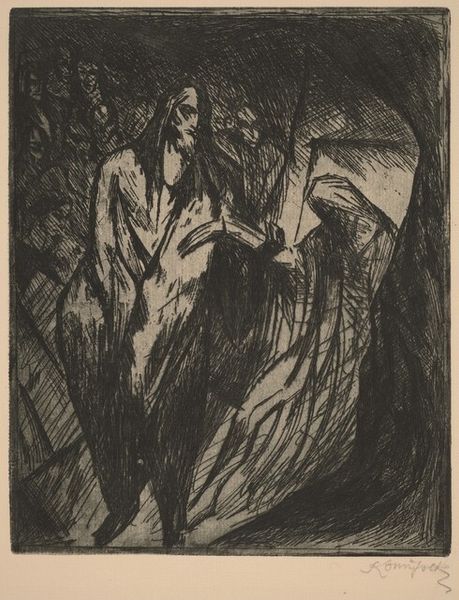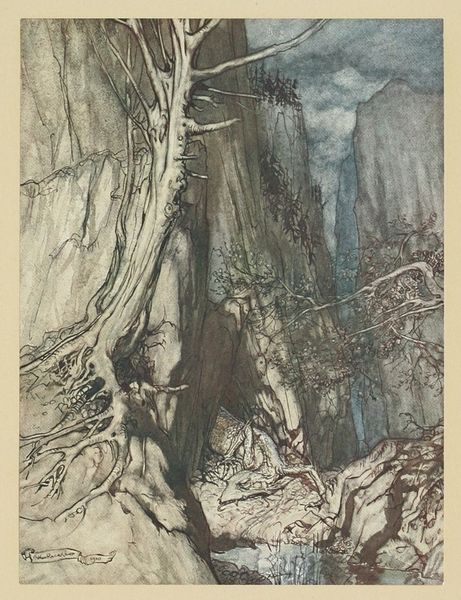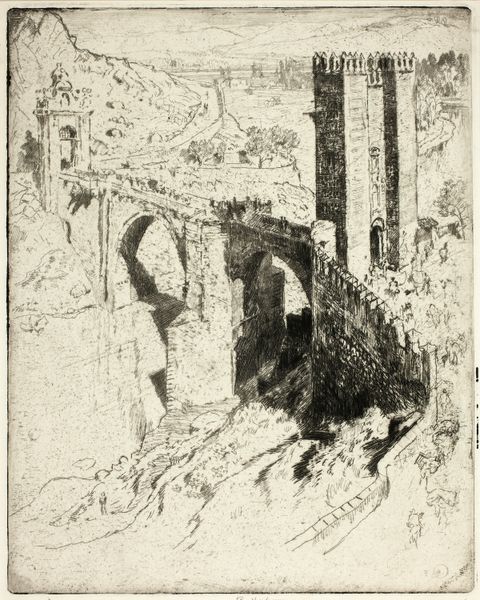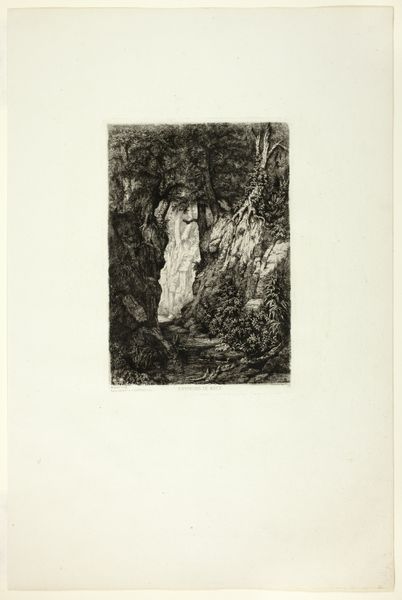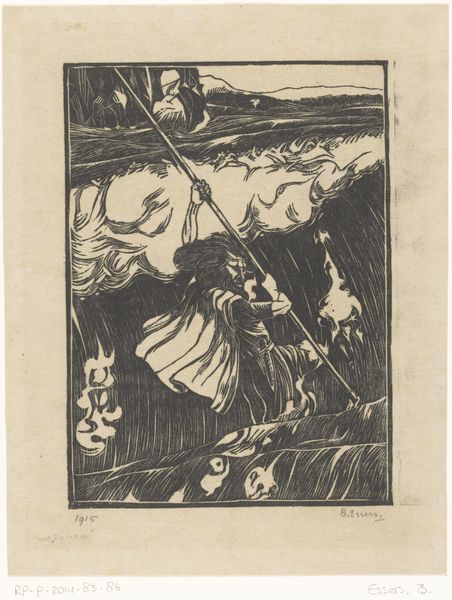
drawing, print, ink
#
drawing
# print
#
ink
#
expressionism
#
cityscape
Dimensions: plate: 15.2 × 11.3 cm (6 × 4 7/16 in.) sheet: 32.3 × 25.5 cm (12 11/16 × 10 1/16 in.)
Copyright: National Gallery of Art: CC0 1.0
Editor: This is Richard Gessner's "Essen Seen from the Krupphaus," a cityscape made with ink in 1920. It feels very claustrophobic, almost like a pressure cooker. What social undercurrents were at play here, and how do they inform the composition? Curator: Absolutely. This isn't just a picture of Essen, but a snapshot of societal tensions boiling beneath the surface during the Weimar Republic. The thick, swirling ink creates that oppressive feeling. Consider the Krupp family's influence, their iron and steel empire shaping not just the landscape, but also the lives of the working class. Editor: So the Krupphaus represents power, but also potentially exploitation? Curator: Exactly! Gessner uses the cityscape—the factories, the crowded streets—to symbolize the dehumanizing effect of industrial capitalism. The huddled masses are dwarfed by the architecture of industry. Look at the contrast between the heavy lines depicting the factory and the finer lines used for the people. What does that suggest? Editor: It's as if the people are secondary, almost fading into the background. Were Expressionist artists often focused on these types of social issues? Curator: Expressionism frequently grappled with alienation and social commentary, particularly in response to the rapid industrialization and urbanization of the time. Gessner doesn't just show us Essen; he compels us to consider who it serves and at what cost. What does this piece make *you* question about our contemporary cities? Editor: It makes me think about the environmental and social costs that are hidden in plain sight. It is not just about buildings; it is about the lived experience. Curator: Precisely. Gessner provides us with a crucial visual lens to critique the forces shaping our own world.
Comments
No comments
Be the first to comment and join the conversation on the ultimate creative platform.
